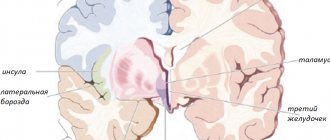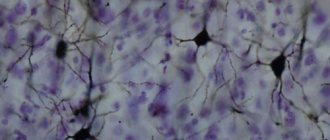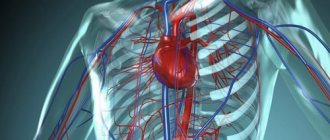All functions of our body are regulated by the brain.
Functionally and structurally, the left and right hemispheres are different from each other. This is the interhemispheric asymmetry of the brain. This is the rule of how the brain works not only in humans, but also in animals. This asymmetry is also called functional. Functional interhemispheric asymmetry of the brain is the most important physiological and psychological feature of the brain.
This asymmetry is not congenital and is formed before 10-15 years. It has its own age-related characteristics and is implemented differently in different parts of the brain. This process is called lateralization.
Features of the right and left hemispheres
Particular attention in the study of the brain is paid to the relationship between hemispheric asymmetry and mental processes. Interhemispheric asymmetry of mental processes is the ability of the brain to assign the main role to the right hemisphere for the implementation of one type of mental functions, and the left hemisphere for another.
The study of speech showed that verbal characteristics are under the control of the left hemisphere, and voice intonations and timbre are under the control of the right. Also, the left hemisphere is responsible for strengthening conditioned reflexes and for abstract thinking, defining goals, and sequential processing of information using the analytical method.
In turn, thanks to the right hemisphere, conditioned reflexes are developed, tasks are implemented, information is simultaneously processed, and the characteristics of objects are perceived. And if we talk about emotions, then it is this part of the brain that is recognized as more “emotional”: negative or strong emotions are under its control, and the left hemisphere is responsible for weak and positive ones.
Functional asymmetry of the brain is very indicative of visual perception: the left hemisphere perceives the image in detail, separately analyzing color, size, etc.; the right one, on the contrary, evaluates the image as a whole.
We recommend: Intuition is
The motor difference is manifested in the fact that the part of the cortex of the left hemisphere is responsible for the work of the muscles of the arms, legs, and body, for example, on the right side. And only certain facial muscles are under the control of both hemispheres.
History of origin
The first assumptions that the telencephalon is not a continuous homogeneous mass consisting of nerve cells were made by the German scientist F. Gall at the turn of the 18th-19th centuries.
The anatomist believed that the nervous apparatus of speech is located in the anterior lobes of the brain. However, the researcher was mistaken for a charlatan, and all his assumptions were rejected. Subsequently, similar attempts were made by such minds as Buyone, Buyot and Dax, but they were not taken seriously - various studies and reports by theorists and doctors did not receive due attention from the scientific community. The first to gain recognition was the French neurologist Broca. The doctor suggested that the center of speech is located in the frontal gyrus, namely in the left (later this area of the brain was named after the discoverer). The second important step in the study of asymmetry was the work of Broc Wernicke's student. His report was devoted to impaired speech understanding due to damage to the left temporal lobes.
Meanwhile, the Russian neurological school was building the foundation for studying the brain. The first Moscow scientific neurological institute was founded by A.Ya. Kozhevnikov. The scientist set himself and his collaborators the task of studying the bilateral organization of mental functions of the brain.
Subsequently, scientific contributions were made by the young science of neurosurgery. Scientists studied the function of individual areas when they were damaged, or more precisely: when a certain area of the brain was damaged, the researchers monitored which particular brain function was lost.
By the middle of the 20th century, neuroscience had accumulated enough information and theories that made it possible to imagine the relationship between the hemispheres and their specialization. Subsequently, research on the topic of creativity was carried out, and is now being carried out. Scientists are interested in which area or hemisphere is responsible for creation and creation. In the modern view, the function of creativity is explained as the result of the joint work of both hemispheres.
Connections between the hemispheres and their properties
At the moment, the problem of interhemispheric asymmetry and interhemispheric interaction is one of the most important in natural science. This issue was first raised by Hippocrates, and in the 19th century a sufficient number of facts were collected confirming interhemispheric differences.
The development of the theory of interhemispheric asymmetry proceeded in several stages. At first it was believed that the left hemisphere was completely dominant over the right. Then prerequisites appeared to believe that each of them could dominate depending on the functions performed.
We recommend: Ambidextrous – who is it?
Now this issue is being studied in terms of the relevance of the participation of each cerebral hemisphere in the implementation of mental functions. The participation of each of them in performing different functions is not total, but partial. It has been revealed that the cerebral hemispheres take unequal in type and unequal in importance participation in the implementation of mental functions.
Sensory lateralization is as follows: one sense organ (paired) responds more strongly to stimulation. Thus, the dominant eye has better vision, the ear has more acute hearing, etc.
Lateralization of higher mental functions is manifested in how information is received, processed and stored, and how a plan of behavior is chosen in a given situation.
Thus, individuals who are typical of the left hemisphere are distinguished by rationality, logic, and thoroughness. In turn, right-hemisphere people are characterized by inconsistency and lack of inclination to analysis.
We recommend: Unconditioned reflexes - what are they?
The following properties of functional asymmetry can be distinguished:
- Dominance. Zones of one hemisphere are activated at the time of certain activity. This is a stable characteristic.
- Switchability. If the state of the body changes, then the activation of the hemisphere also changes.
- Plastic. Some features explained by asymmetry change and become fixed under the influence of certain factors.
Thanks to recent work in this area, it has also been revealed that in certain areas of activity the asymmetry between the hemispheres is stationary. But sometimes its dynamism manifests itself when lateralization occurs over a long period of time.
The main interhemispheric differences were noticed by the scientist R. Sperry. To treat epilepsy, he developed an operation to dissect the corpus callosum. Thus, it became possible to study the work of the brain hemispheres in some isolation from each other.
Observation of patients who underwent this operation showed very serious disturbances in the functioning of the cerebral organization of higher mental functions, which were called “split brain” syndrome.
In these patients, temperament and intelligence did not change, but phenomenal disorders of higher mental functions were identified, which were a consequence of the operation.
For example, when a patient was asked to assemble a structure according to a diagram with his right hand, a large number of inaccuracies were noted. This happened because the left hemisphere is interconnected with the right side of the body. Thus, it was discovered that the cerebral hemispheres are a single organ, and only with their interaction does the brain function correctly.
Types of asymmetries
The word asymmetry
in this case, it means the lack of symmetry of the cerebral hemispheres.
Bilateral asymmetry
is a type of asymmetry in which the right and left objects are similar to each other, but they cannot be combined by normal movements in space.
Each of these mirror ( enantiomorphic) objects
The typology of asymmetries suggests several bases for classifications. In mammals, two forms of asymmetry are distinguished: interhemispheric ,
i.e., the dominance of the activity of the structures of one hemisphere, and
functional
the specialization of each hemisphere when performing individual functions.
Based on the nature of the manifestation, three types of asymmetry can be distinguished: motor, sensory and mental. Motor asymmetry
manifests itself in the inequality of participation of the right and left halves of the body in movement. Thus, according to the involvement of one or another hand in an activity, right-handed and left-handed people (right-handed and left-handed) are distinguished. In English, in addition to the term handed-ness (“handedness”), there is a word that has the meaning “legness,” which implies the predominance of one of the legs in the movement.
Under sensory asymmetry
the functional inequality of paired sense organs is understood. For example, the role of the right and left eyes in binocular vision is different. The dominant eye is the first to be established on the object, and its image
Rice. 4.4.
Horizontal section through the human brain at the level of the temporal lobe (Kalat, 1992)
expressions prevail over the image of the subordinate. Similar patterns are characteristic of the ear. It was revealed that the hearing acuity of the dominant ear is higher. The threshold of olfactory sensitivity is also different. For the majority (70%) of people it is higher on the right, in 13% it is higher on the left, and in the rest it is symmetrical. By assessing the dominance of the hemispheres in the sensory and motor spheres, it is possible to describe the profile of functional sensorimotor asymmetry, that is, to identify a person’s leading hand, foot, eye, and ear.
Mental asymmetry
due to the presence of two hemispheres of the brain in humans.
The left hemisphere controls the sensory and motor spheres of the right half of the body, and the right hemisphere controls similar spheres of the left (Fig. 4.2). For hearing and vision, hemispheric control is somewhat more complex than the described scheme. Information reaching the nasal (closer to the nose) and temporal (temporal)
halves
92
Rice. 4.2.
The intersection of sensory and motor pathways connecting the body and brain (Springer and Deitch, 1983).
Rice. 4.3.
The nature of the separation of fibers carrying information to the brain from different visual fields (Springer, Deitch, 1983).
Rice. 4.5.
Location of the anterior and hippocampal commissure in three-dimensional perspective (Kalat, 1992).
retina, is directed to different parts of the brain: from the temporal half of the retina, projections go to the same (ipsilateral)
hemisphere, from the nasal to the opposite
(contralateral).
Thus, signals from the right halves of both eyes (left visual field) go to the right hemisphere, and from the left halves (right visual field) to the left (Fig. 4.3). The hemispheres are connected to each other by several commissures (bundles of fibers), the largest of which is the corpus callosom (Fig. 4.4,4.5).
Currently, data have been obtained on brain asymmetry in birds, rats, and mice.
necks, antelopes, cats, dogs, primates, as well as fossil animals that existed half a billion years ago. Asymmetry can manifest itself at the anatomical, sensory, motor and cognitive levels, and its nature depends on hormonal status, developmental level and environmental influences (Bradshow, 1990).
Relationship between brain development and gender
Currently, there are observations confirming the connection between a person’s gender and the speed at which the brain matures. By the time they are born, the left hemisphere is the most developed in girls, and the right in boys. This difference is explained by the connection between hemispheric asymmetry and hormones.
This happens because androgens have a slowing effect on the central nervous system. In turn, estrogens, like progesterone, affect the central nervous system on the contrary, as an activator.
This is partly the reason why girls begin to speak and read earlier than boys, and they usually do it better.
Numerous studies show that men's brains are more asymmetrical in their organization than women's; Also, in the stronger half of humanity, a predominance of the left hemisphere over the right is more common.
We recommend: The process of forgetting in psychology
Thanks to research, it has become clear that when there are defects in the left hemisphere (trauma, tumor, surgery), men’s verbal function suffers much more often than women. This just proves the symmetry of the female brain in comparison with the male one.
Psychological differences by gender are also closely related to unequal lateralization. Speech, its speed and fluency, literacy - here women are ahead of men. But the abilities for geometry, geography, chess, and invention are, as a rule, higher among men.
The functional role of the hemispheres only relatively gives the opportunity and right to call them dominant and subdominant. A person performs some functions with the help of the left hemisphere, others with the help of the right. But mental activity is impossible without the close interaction and cooperation of both of them.
Research into hemispheric differences continues to this day. It is possible that current knowledge will become irrelevant and outdated in the future, and scientists will finally comprehend all the secrets of the brain. Author: Yana Glukhova
Brief history of studying the problem
In 1836, physician Mark Dax made a presentation at a meeting of the medical society. He found signs of damage to the left hemisphere in patients with speech loss. He was unable to identify any cases of speech loss due to damage to the right hemisphere. 1844: A
Vagan attracted public attention by writing “Treatise on the Duality of the Brain.” He considered man to be a dual being
“Discordance in the work of the two hemispheres leads to insanity” (at that time, each hemisphere was considered a separate brain; the idea of asymmetry had not yet arisen). The mid-19th century saw the rapid development of aphasiology (the science of speech disorders). Franz Gall's idea: different functions are controlled by different areas of the brain. George Boillot associated left-hemisphere aphasia with right-handedness in most people. 1861: Auburtin repeated Gall's assertion that the center controlling speech was in the frontal lobes of the brain. A few months later, Paul Broca formed a rule linking left-handedness with the representation of speech in the right hemisphere. Ten years after Broca's observations, the concept known today as the concept of hemispheric dominance had become the main point of view on interhemispheric relationships. In the same year, Broca examined a patient with a severe speech disorder - the patient understood, but did not say anything (motor aphasia). The observed motor area in the left hemisphere, which is responsible for speech, was destroyed. Broca believed that he had discovered the center of speech. 1869: J. Jackson formulated the idea of the leading hemisphere: “For the most important and most important processes there must be one leading side.” 1874: German psychiatrist Karl Wernicke was the first to document another type of aphasia - sensory aphasia. This was the opposite of Broca's case: the patient could speak, but did not understand anything.
Notes
- ↑ Bianchi V. L. (1985) Asymmetry of the animal brain. L.: Science. 295 s
- ↑ Walker SF (1980) Lateralization of Functions in the Vertebrate Brain. Brit. J. Psychol. 71
P. 329—367. - Westen et al. 2006 Psychology: Australian and New Zealand edition
. John Wiley p.107 - Arshavsky V.
(inaccessible link). SEMINARIUM HORTUS HUMANITATIS (2007). Retrieved June 7, 2020. - Geodakyan V. A. (1993) Asynchronous asymmetry. Journal higher nervous activity. 43
issue 3. pp. 543-561. - Geodakyan V. A. (1992) Evolutionary logic of functional asymmetry of the brain. Dokl. RAS. 324
No. 6. pp. 1323-1326. - Geodakyan V. A., Geodakyan K. V. (1997) New concept of left-handedness. Dokl. Academician Sci. 356
No. 6. P. 1-5. - Geodakyan V. A. (2003) Homo sapiens on the way to asymmetrization (Theory of asynchronous evolution of the hemispheres and cis-trans interpretation of left-handedness). Anthropology on the threshold of the 3rd Millennium. Moscow, 1
p. 170-201. - Victor Dolnik, “Naughty Child of the Biosphere”
- In the same place, chapter “Journey to the World of Ancestors”.
- Gazzaniga, M. S., & Hutsler, J. J. Hemispheric specialization. In R. A. Wilson & F. C. Keil (Eds.), The MIT encyclopedia of the cognitive sciences (pp. 369–372). Cambridge, MA: MIT Press. 1999
- ↑ McGlone J. (1978) Sex Difference in Functional Brain Asymmetry. Cortex. 14
P. 122-128. - ↑ McGlone J. (1980) Sex Difference in the Human Brain Asymmetry: a Critical Survey. Behav. and Brain Sci. 3
No. 2. P. 215—263. - ↑ Springer S., Deutsch G. (1983) Left Brain, Right Brain. M.: Mir. 256 s
- Buffery A., Gray J. (1972) Sex differences in the development of spatial and linguistic skills. Gender differences, their ontogeny and significance / Ed. C. Ounsted L Edinburgh, pp. 123-158.
- Harris LJ (1978) Sex Differences in Spatial Ability. Asymmetry of the Function of the Brain. (Ed. Campbell). L.: Cambridge.
- Maccoby E., Jacklin C. (1974) The Psychology of Sex Difference. Stanford.
- Wada JA, Clark R., Hamm A. (1975) Cerebral hemisphere asymmetry in humans. Arch. Neurol. 32
P. 239-246. - ↑ Levy J. (1978) Lateral differences in the human brain in cognition and behavioral control. Cerebral correlates of conscious experience. No. 1.
- Witelson SF (1976) Sex and the single hemisphere. Science. 193
P. 425-427. - Lenneberg E. N. (1967) Biological foundations of language. NY Wiley.
- Waber D. (1976) Sex differences in cognition: a function of maturation rate. Science. 192
P. 572-573.










